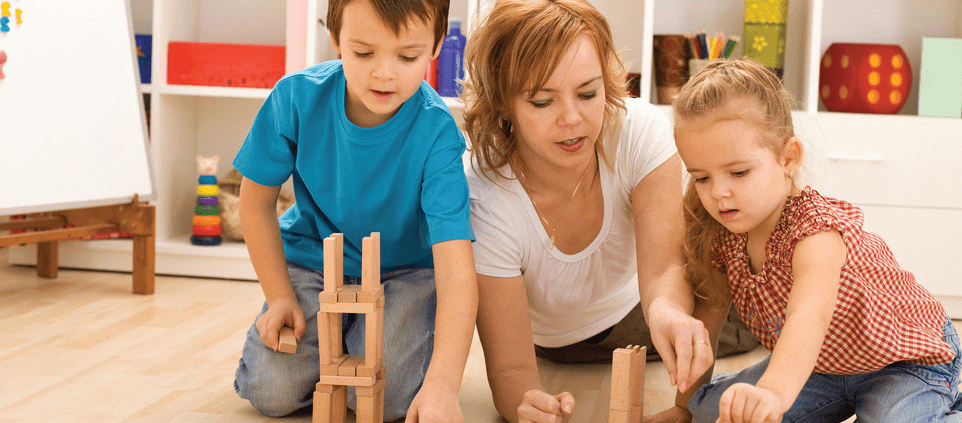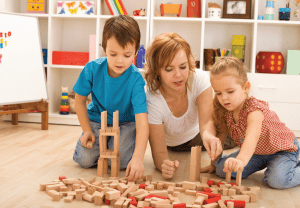Case Study: Childcare Centre Safe Design Considerations
Case Study: Childcare Centre Safe Design
This case study is a compilation of issues from several different childcare projects.
Identifying hazards during the design phase
Every project has its own unique considerations, and in this particular project, the design brief required the conversion of an existing structure – a three storey building – into a large multilevel childcare centre.
The existing building had been built in the 1960s and as such had historical construction aspects to consider. The designer undertook a visual inspection and identified asbestos and lead based paints had been used in the original construction. As a result, project managers organised a hazardous materials survey, which confirmed the presence and the location of the hazardous substances.
It was determined that the hazardous materials would be removed during the construction of the childcare centre.
Across the road from the site, was a power generation plant which posed issues around the health effects of electro-magnetic radiation (EMR). The designer subsequently took this potential health issue into consideration and researched various claddings and glazing which would reduce exposure of EMR to occupants of the new building.
Including outdoor areas into design
There is strong evidence that shows the importance of outdoor play in childcare environments and the client wanted to ensure that this was included as a key component in the design of the childcare centre. The designer incorporated this into the framework of the existing structure and achieved the inclusion of outdoor spaces by creating large balconies on each level. This did, however, create potential significant hazards including the possibility of children moving and climbing on outdoor furniture and falling.
The designer used ‘safe design’ principles to address this hazard, increasing the balustrading above the standard required height to 1.6 metres and also specifying glass balustrading without footholds. Other safe design measures included the specification of soft fall and shading for the outdoor playground equipment and large windows to provide greater visibility from internal staff areas.
Garden beds were located in these outdoor areas, taking into consideration the location of the plants and types of plants, to ensure they were out of reach of children, and most importantly, non-toxic if ingested.
The designer also undertook research into the types of treatments possible for the feature timber balcony posts to eliminate the chance of splinters and ensure materials used were non-toxic to children.
Greater visibility and sightlines for interiors
The reception area was located in a position that provided clear visibility and surveillance of people entering the childcare centre, with access controlled by secure glass doors to prevent unauthorised people from entering the centre. A sign-in area for parents was also considered in the design process.
The layout design included separation and soundproofing of the baby area from the toddler area, clear sightlines from baby nappy change stations and food preparation areas to play areas to allow staff to supervise others while undertaking these tasks.
A central staff control area was provided to allow for supervision of each group.
Additional hazard identification and minimisation
Heat sources such as the hot water system and oven were isolated from children to avoid potential harm. A lockable cleaners’ storeroom was provided to store cleaning chemicals and equipment. The designer specified no volatile organic compounds paints and low emissions joinery and carpets to prevent the potential health effects from the off gassing of these products, particularly for those children with Asthma. This also had the added benefit of providing safer products for construction workers during the construction stage.
Greater accessibility for maintenance and site users
Plant was relocated from the roof to ground level to allow for easy access for maintenance purposes. Some air conditioning units were located on the balcony area, but these were located away from the edges and in a screened area. The openings in these screens were resized during the design process to eliminate the potential hazard for hand and finger entrapment. Windows were openable from the inside to allow for easy cleaning, but were secured to prevent access by children.
The original basement car park design did not incorporate pedestrian paths and research indicated this was a significant hazard in childcare centres. The design was revised to include pathways with wheel stops in front of the car spaces, and one-way traffic to allow for better traffic flow.
Managing potential emergencies
To facilitate the evacuation of babies during a potential fire emergency, fire safety cots were specified and a room provided for their storage in an appropriate location. The babies would be placed in these cots to be evacuated by staff. To prevent children from exiting through the fire safety door, it was programmed to only unlock when the alarm was activated. The designer also consulted with the workers’ WHS representative on the proposed safe lock down procedure for the centre to ensure that areas could be safely secured in the event of a lock down in an emergency situation.
Safe Design Consultant: Safe Design Australia
Contact us to find out more
To find out more about this particular project, or how the Safe Design Australia team can assist you on your next project, contact us.








 Safe Design Australia 2025
Safe Design Australia 2025


